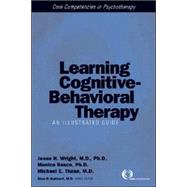
Note: Supplemental materials are not guaranteed with Rental or Used book purchases.
Purchase Benefits
What is included with this book?
Jesse H. Wright, M.D., Ph.D., is Professor and Chief of Adult Psychiatry at the University of Louisville School of Medicine in Louisville, Kentucky.
Monica R. Basco, Ph.D., is Clinical Associate Professor in the Department of Psychiatry, Division of Psychology, at the University of Texas Southwestern at Dallas in Dallas, Texas.
Michael E. Thase, M.D., is Professor and Chief of Adult Academic Psychiatry at the University of Pittsburgh Medical Center in Pittsburgh, Pennsylvania.
| Preface | ix | ||||
| Acknowledgments | xiii | ||||
|
1 | (26) | |||
|
9 | (18) | |||
|
27 | (18) | |||
|
31 | (1) | |||
|
31 | (14) | |||
|
45 | (20) | |||
|
60 | (5) | |||
|
65 | (24) | |||
|
78 | (6) | |||
|
84 | (5) | |||
|
71 | (11) | |||
|
82 | (1) | |||
|
82 | (7) | |||
|
89 | (34) | |||
|
98 | (8) | |||
|
106 | (2) | |||
|
108 | (8) | |||
|
116 | (3) | |||
|
119 | (4) | |||
|
91 | (4) | |||
|
95 | (1) | |||
|
96 | (12) | |||
|
108 | (3) | |||
|
111 | (1) | |||
|
112 | (6) | |||
|
118 | (5) | |||
|
123 | (28) | |||
|
135 | (5) | |||
|
140 | (11) | |||
|
134 | (4) | |||
|
138 | (13) | |||
|
151 | (22) | |||
|
159 | (4) | |||
|
163 | (7) | |||
|
170 | (3) | |||
|
163 | (1) | |||
|
164 | (4) | |||
|
168 | (5) | |||
|
173 | (30) | |||
|
179 | (3) | |||
|
182 | (3) | |||
|
185 | (1) | |||
|
186 | (6) | |||
|
192 | (7) | |||
|
199 | (4) | |||
|
178 | (11) | |||
|
189 | (8) | |||
|
197 | (6) | |||
|
203 | (18) | |||
|
221 | (26) | |||
|
247 | (18) | |||
|
248 | (5) | |||
|
253 | (1) | |||
|
254 | (11) | |||
| Appendix 1: Worksheets and Checklists | 265 | (12) | |||
| Appendix 2: Cognitive-Behavior Therapy Resources | 277 | (8) | |||
| Appendix 3: DVD Guide | 285 | (4) | |||
| Index | 289 |
The New copy of this book will include any supplemental materials advertised. Please check the title of the book to determine if it should include any access cards, study guides, lab manuals, CDs, etc.
The Used, Rental and eBook copies of this book are not guaranteed to include any supplemental materials. Typically, only the book itself is included. This is true even if the title states it includes any access cards, study guides, lab manuals, CDs, etc.